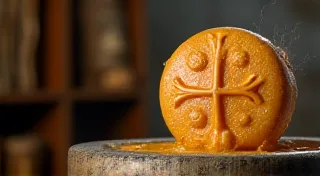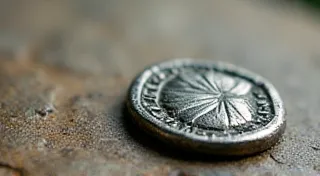Creating Roman Coin Molds: Silicone vs. Resin
Replicating Roman coins is a rewarding craft, blending historical appreciation with hands-on artistry. A crucial step in this process is creating accurate molds. The mold dictates the detail and overall quality of your coin replicas. This article explores two popular mold-making materials: silicone and resin, comparing their strengths and weaknesses to help you choose the best option for your Roman coin replica project.
Understanding the Importance of a Good Mold
A high-quality mold captures the intricate details of an original Roman coin, including the portraiture, legends (inscriptions), and the all-important reverse imagery. A poorly made mold will result in a blurry, inaccurate replica, defeating the purpose of the project. The finer the details you aim to reproduce, the more critical your mold-making process becomes. Accuracy in the mold translates directly to accuracy in the final Roman coin replica, preserving a piece of ancient history in your craft.
Silicone Molds: The Detail Master
Silicone is widely considered the gold standard for mold making, especially for projects requiring fine detail like Roman coin replicas. Its flexibility allows for easy removal of the cast piece, and it captures incredibly precise details. Here's a breakdown of silicone’s pros and cons:
Silicone Advantages:
- Exceptional Detail Capture: Silicone's softness and low viscosity allow it to flow into even the smallest crevices of the original coin, faithfully replicating intricate designs.
- Durability: Silicone molds, when properly cared for, can last for a considerable number of castings.
- Flexibility: The flexibility makes demolding easy and minimizes the risk of damaging the original coin or the newly cast replica.
- Repeatability: Consistent results with each casting.
Silicone Disadvantages:
- Cost: Silicone is generally more expensive than resin.
- Shrinkage: Some silicone formulations can shrink slightly during curing, potentially impacting dimensional accuracy. Choosing a "low shrinkage" silicone is highly recommended.
- Sensitivity to Sulfur-Based Metals: Certain sulfur-containing metals can inhibit the curing process of some silicones. This isn't typically an issue for bronze or copper replicas but is worth noting if experimenting with other alloys.
Resin Molds: The Budget-Friendly Option
Resin molds offer a more economical alternative to silicone, though they do come with trade-offs. They are generally easier to mix and pour, making them attractive to beginners. However, their ability to capture fine detail is significantly less than silicone.
Resin Advantages:
- Lower Cost: Resin is significantly cheaper than silicone, making it a more accessible option for hobbyists.
- Ease of Use: Generally easier to mix and pour, particularly for beginners.
- Rigidity: Provides structural support, which can be useful for larger or more complex coin designs.
Resin Disadvantages:
- Limited Detail Capture: Resin molds tend to blur finer details, resulting in a less accurate replica.
- Brittle: Resin molds are more prone to cracking and breakage.
- Difficult Demolding: The rigidity of resin can make demolding challenging, increasing the risk of damaging the cast piece or the mold itself.
Making the Choice: Which is Right for You?
The best choice depends on your priorities and budget. If accuracy and detail are paramount, and you’re willing to invest a bit more, silicone is the clear winner. It’s the professional's choice for replicating Roman coins. If you're on a tight budget and aren't overly concerned with capturing every minute detail, resin can be a viable option. However, be prepared for a less-than-perfect replica.
Tips for Success Regardless of Material
- Original Coin Preparation: Clean the original coin meticulously before making a mold.
- Mold Release Agent: Always use a mold release agent (even with silicone) to prevent sticking.
- Vacuum Degassing: For silicone molds, vacuum degassing is highly recommended to remove air bubbles and improve detail.
- Proper Curing: Follow the manufacturer’s instructions for curing times and temperatures.





